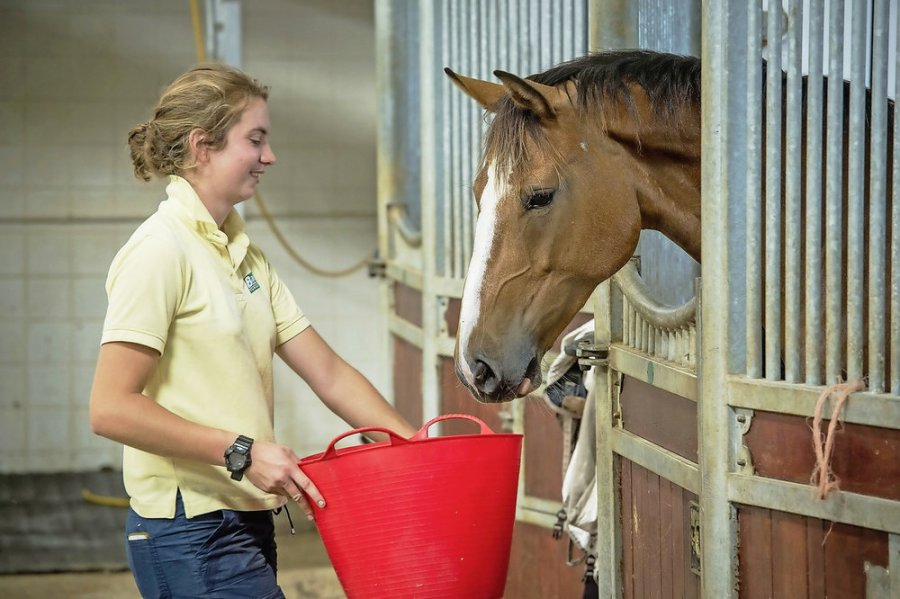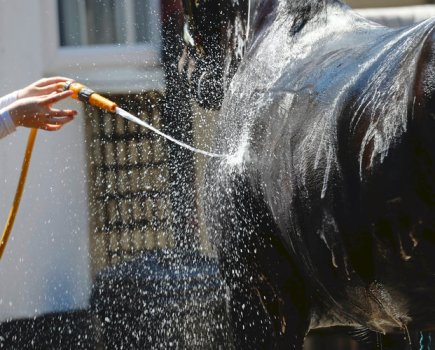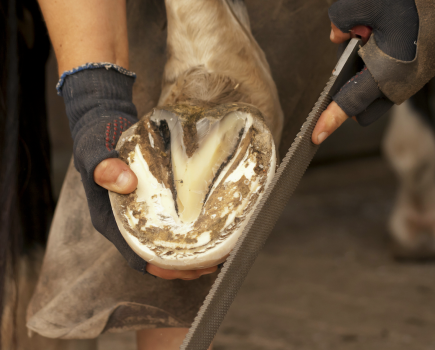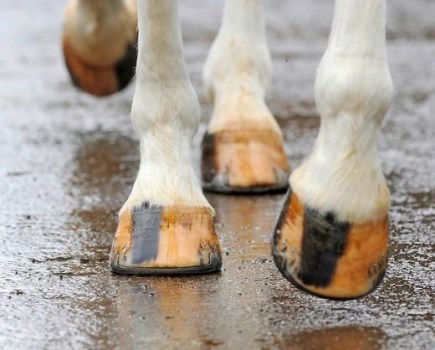Adding medication to hard feed is necessity when your horse is recovering from a health problem, but what if they refuse to eat it? Fooling sensitive tastebuds can be tricky, and getting a crafty horse or pony to consume their tiny pink pergolide tablet to manage Cushing’s disease, for example, can take some doing. When your vet gives you medication to put in your horse’s feed, he or she makes several assumptions:
- First, that you will mix it thoroughly with a feed you know your horse like
- Second, that you will ensure the horse eats all of each dose in one sitting with little or no waste
- Third, that you will continue to monitor how well the horse eats the feed each time
- And finally, that you will watch for any adverse effects, such as diarrhoea.
My experience as a practising vet tells me that in many cases these assumptions turn out to be invalid, principally because the drug has not been adequately disguised or the horse just does not like it. Care in selecting the right type and palatability of feed to use, and presenting it properly to the horse, can make a huge difference to how well the horse consumes it.
1 Choose the right food
It is important that the food containing the medication is both known to be accepted by the horse and very palatable. Experience suggests that molassed coarse mixes and molassed chaffs are the most palatable, plus they have the advantage of being sticky.
Other palatable feeds include molassed sugar beet and some of the pre-soaked mashes. It may be necessary to obtain a bag of one of these quickly and especially for the course of treatment, so that it can be started straight away.
There may be a reluctance to use molassed feeds because of their sugar content. However, most medication courses are short, and the amount of sugar taken in is relatively small.
2 Give it with enough feed
The feed should be fed in a reasonable volume (at least half a bucket) both to provide a large surface area to absorb the drug and to dilute the taste. Obviously, therefore, cubes on their own are not an appropriate feed for medicating a horse.
3 Don’t use an unfamiliar feed
It is essential, if the horse isn’t familiar with the feed chosen, that a dampened quantity is first offered to the horse without any medication to see if he will like it and finish it. If this is not done, a simple dislike of the feed may be mistaken for a refusal of the medication.
Bear in mind also that introducing new feeds gradually is essential for gut health.
4 Add flavour
The sensation of taste, or more correctly flavour, is a complex interaction of the stimulation of taste receptors on the tongue, texture receptors in the mouth, and odour receptors in the nose.
It may be that some medications are rejected because of their smell (which may be subtle) rather than their tast. So, masking both smell and taste may be a key to making medicated feeds more attractive.
Molassed feeds may be attractive because of both their smell and their taste. Molasses or black treacle can be added to other types of feed, for example high-fibre chaff. To do this I dissolve a heaped teaspoonful in a mug of boiling water and add it to the feed.
Other common flavourings that can be used are apple juice or apple sauce, grated or pureed carrots, neat blackcurrant cordial, peppermint cordial, garlic powder and fenugreek seeds.
It is important that the horse’s response to the flavouring is tested first. Horses that have never been fed Polo mints may not like peppermint cordial, for example.
5 Use a suitable bucket
The medicated feed must not be wasted by the horse dropping it on the floor or knocking over the feed container.
The feed should always be offered on a clean area of the box that is free from forage and bedding so that the horse can find and eat any spillage.
Commonly used rubber shallow feed bowls are easily knocked over and can result in significant waste.
Feed bowls mounted in the corner of the stable or attached to a wall are resistant to the horse pawing the container and tipping it over.
A door trough is best, especially if it is placed on the outside of the door rather than the inside so that any spillage you see can be easily and quickly picked up and placed back into the trough. Or, if the horse is a messy eater, the bucket can be held while the horse feeds from it.
6 Supervise the feed
Feeding medication must always be given under supervision to ensure the horse eats all of it at one sitting and does not waste any.
The feed have a small amount of water added and be well mixed with a stick or spatula so that it is lightly dampened. The medication powder or granules are only then added, and the feed mixed again before being offered to the horse.
A common mistake is to add medication to the dry feed, and then add water and mix. This results in a lot of the medication sticking to the side of the bucket after mixing and so the horse does not get the full dose.
7 Get it right first time
Refusal of the medicated feed tends to take two forms: refusal of the feed from the very start after a few mouthfuls have been taken or, following initial acceptance, a gradual reduction in the amount that the horse eats over two to three days occurs.
In the latter situation, the horse becomes so suspicious of any feed that even changing it to something completely different may not persuade him to start eating the medication again.
It follows then that every effort must be made to ensure that the very first feed offered to the horse must be the one you think he will find most palatable.
It is important that you avoid putting two different drugs into the same feed, because you will double the chance of the horse refusing to eat it.
8 Don’t give up
It is important that you notify your vet promptly if the horse will not eat the medication so that an alternative solution can be found. This may include finding a different version of the drug or making a paste. This can be useful for administering the most unpalatable drug of all: pergolide tablets, which are used to treat the symptoms of Cushing’s disease.









